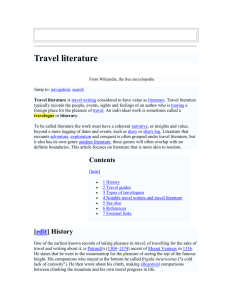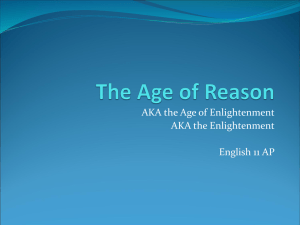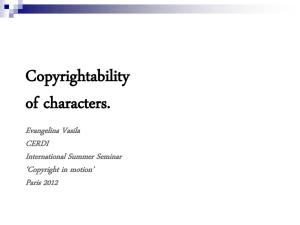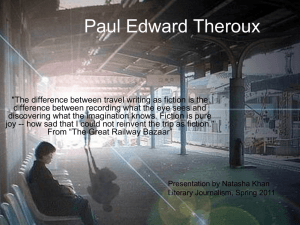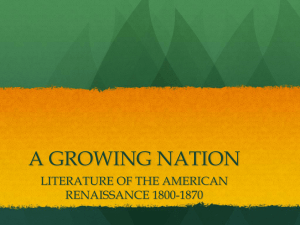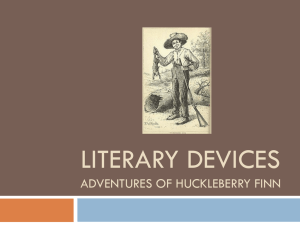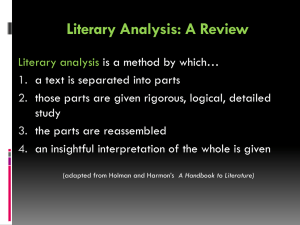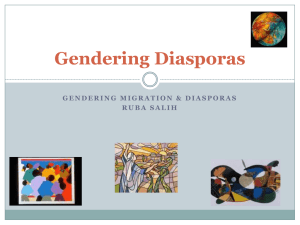Travel Theory
advertisement
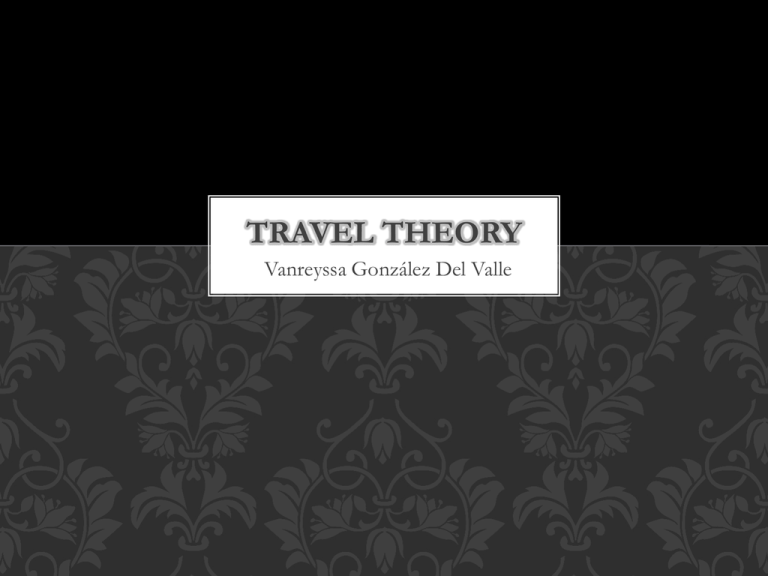
TRAVEL THEORY Vanreyssa González Del Valle TRAVEL THEORY Interest in travel and travel writing has emerged as the result of an intellectual climate that is interrogating imperialism, colonialism, postcolonialism, ethnography, diaspora, multiculturalism, nationalism, identity, visual culture, and map theory. Travel theory's lexicon includes such words as transculturation, metropolitan center, "imperial eyes," contact zones, border crossing, tourist/traveler, imperial frontier, hybridity, margin, expatriation/repatriation, cosmopolitanism/localism, museology, displacement, home/abroad, arrival/return, road narrative, and diaspora, to name just a few. TRAVEL LITERATURE Travel literature is travel writing of literary value. Travel literature typically records the experiences of an author touring a place for the pleasure of travel. An individual work is sometimes called a travelogue or itinerary. Travel literature may be cross-cultural or transnational in focus, or may involve travel to different regions within the same country. Accounts of spaceflight may also be considered travel literature. Literary travelogues generally exhibit a coherent narrative or aesthetic beyond the logging of dates and events as found in travel journals or a ship's log. Travel literature is closely associated with outdoor literature and the genres often overlap with no definite boundaries. Another subgenre, invented in the 19th century, is the guide book. TRAVELOGUES The Americans, Paul Theroux, Bill Bryson and William Least HeatMoon, Welsh author Jan Morris and Englishman Eric Newby are or were widely acclaimed as travel writers although Morris is also a historian and Theroux a novelist. Travel literature often intersects with essay writing, as in V. S. Naipaul's India: A Wounded Civilization, where a trip becomes the occasion for extended observations on a nation and people. This is similarly the case in Rebecca West's work on Yugoslavia, Black Lamb and Grey Falcon. Sometimes a writer will settle into a locality for an extended period, absorbing a sense of place while continuing to observe with a travel writer's sensibility. Examples of such writings include Lawrence Durrell's Bitter Lemons, Deborah Tall's The Island of the White Cow and Peter Mayle's best-selling A Year in Provence and its sequels. TRAVELOGUES Travel and nature writing merge in many of the works by Sally Carrighar, Ivan T. Sanderson and Gerald Durrell. These authors are naturalists, who write in support of their fields of study. Charles Darwin wrote his famous account of the journey of HMS Beagle at the intersection of science, natural history and travel. Literary travel writing also occurs when an author, famous in another field, travels and writes about his or her experiences. Examples of such writers are Samuel Johnson, Charles Dickens, Mary Wollstonecraft, Robert Louis Stevenson, Hilaire Belloc, D. H. Lawrence, Rebecca West and John Steinbeck. FICTION Fictional travelogues make up a large proportion of travel literature. Although it may be desirable in some contexts to distinguish fictional from non-fictional works, such distinctions have proved notoriously difficult to make in practice, as in the famous instance of the travel writings of Marco Polo or John Mandeville. Many "fictional" works of travel literature are based on factual journeys – Joseph Conrad's Heart of Darkness and presumably, Homer's Odyssey (c. 8th cent. BCE) – while other works, though based on imaginary and even highly fantastic journeys – Dante's Divine Comedy, Jonathan Swift's Gulliver's Travels, Voltaire's Candide or Samuel Johnson's The History of Rasselas, Prince of Abissinia – nevertheless contain factual elements. PHOTOS
